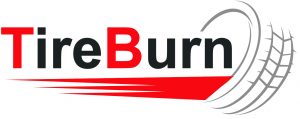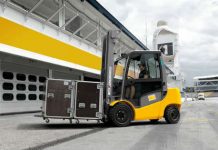Choosing the right type of truck for your delivery can be confusing, especially when the cost of availing the services varies drastically. In such a case, clarity on the quantity, weight, and perishability of the products can help you make the right transportation decisions. In this article, we will discuss the three major types of trucks- dry vans, reefer vans, and heater vans to help you choose the right trucking service for your business.

What is a Dry Van?
Also known as box trailers, dry vans are one of the most commonly used types of trailers in transportation. They are enclosed trailers used to deliver non-perishable goods.
What is a Reefer Van?
Commonly used in the pharmaceutical and agriculture delivery system, reefer vans are refrigerated trailers. The interior of reefer vans is insulated and fitted with HVAC systems to maintain a cool temperature.
What is a Heater Van?
As the name suggests, a heater van is an enclosed trailer meant for delivering items, like paint, that can freeze very easily in cooler environments.
Differences Between Dry
Vans, Reefer Vans, and Heater Vans
Dry vans, reefer vans, and heater vans are different from each other in several different ways. Let us check them out.
- Purpose
Each type of van is suitable for hauling different types of cargo. A dry van is used to haul dry, non-perishable goods like furniture and clothing. Reefer vans are used by the agriculture and pharmaceutical industries to transport goods in a freezer.
Lastly, heater vans are used to deliver agricultural produce, paint, and other materials that are at risk of freezing in frigid places in a temperature-controlled environment.
- Climate Control Features
Dry vans are not equipped with any temperature control features. On the other hand, reefer vans are now equipped with both cooling and heating features.
- Capacity
Dry vans, reefer vans, and heater vans usually come in the same sizes. However, their capacities differ drastically. This is because reefer vans and heater vans require insulation and heating/cooling systems, which reduces their interior capacities.
- Maintenance Requirements
Reefer and heater vans have special maintenance requirements. As per the guidelines of the Food Safety Modernization Act, vans used to transport perishable goods need to follow a strict hygiene code.
This means that reefer vans and heater vans are non-commissioned for a few days between each mission for maintenance work on their heating/cooling systems and deep cleaning. On the other hand, dry vans have standard maintenance requirements.
- Damage To Goods
Dry vans, reefer vans, and heater vans can also cause irreparable damage to the goods. For instance, dry vans are susceptible to water damage, which can lead to mold and rotting, especially in dry vans with compressed wood flooring.
On the other hand, if the heating/cooling system of a reefer or heater van starts malfunctioning in the middle of the journey, it can spoil the goods.
- Cost of Transportation
The cost of hiring a dry van is relatively cheaper than that of a heater or reefer van. This is because you burn more fuel while operating the heating/cooling systems in a heater and reefer van.
The high cost of maintaining and repairing these vans only adds to the cost of operation as well.
- Versatility
Both reefer and heater vans can be used to haul dry, non-perishable goods. However, a dry van is not suitable for transporting goods that need to be delivered in a temperature-controlled environment.
The major differences between dry vans, reefer vans, and heater vans are their capacity, ability to control temperature, and cost of operation. Hopefully, this article can help you make an informed decision regarding your business and transportation needs.






















